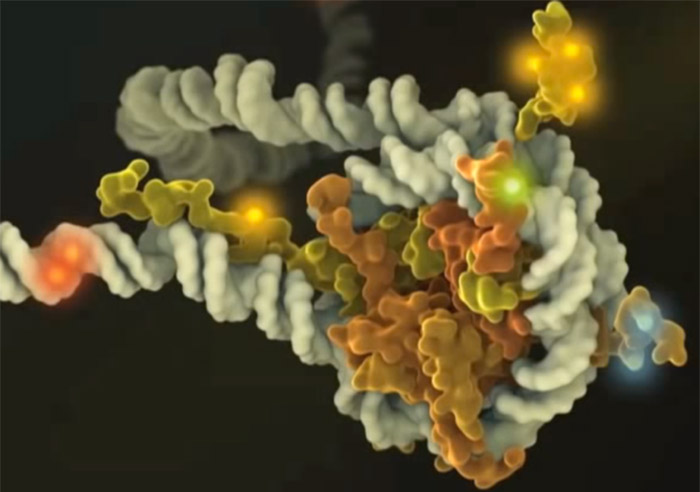Computational Strategy Helps to Map Human Epigenome
Published Date
By:
- Susan Brown
Share This:
Article Content

Chemical tags change how DNA is read
Nearly every cell in our bodies carries the same genetic code. Yet different types of cells read the same DNA in widely different ways, influenced by chemical tags that modify the genetic material without changing the underlying DNA sequence. Scientists today announced significant progress in the unraveling of the code that guides those differences, a body of information they call the epigenome.
Novel computational methods developed at UC San Diego contributed to the success of this large-scale project and will help to guide future exploration of the human epigenome.
Because the epigenome varies with different types of cells and changes over the course of development, the scale of the endeavor eclipses that the mapping of the genome. A grasp of the variation, and patterns within it, should advance our understanding of both normal human biology and disease.
To uncover patterns and predict the placement of epigenomic marks, a group led by Wei Wang, a professor of chemistry and biochemistry, takes a computational approach. He and John Whitaker, a former postdoctoral fellow who led one of the Epigenomics Roadmap analyses, developed a program called Epigram that predicts the placement of epigenomic marks based on relatively short patterns, or motifs, in the DNA sequence.
Their computational strategy is described in a paper published in Nature Methods and included in “threads” of related research papers published by Nature today. In particular, they were able to use Epigram to identify genes that control epigenomic mark placement in human stem cells. The information their program uncovers will also help to guide future stem cell research.
Wang, Whitaker, and many others from UC San Diego are among members of the Epigenomics Roadmap Consortium and are among the authors of the today’s report of more than 100 reference human epigenomes.
Share This:
You May Also Like
UC San Diego is Strengthening U.S. Semiconductor Innovation and Workforce Development
Technology & EngineeringStay in the Know
Keep up with all the latest from UC San Diego. Subscribe to the newsletter today.



